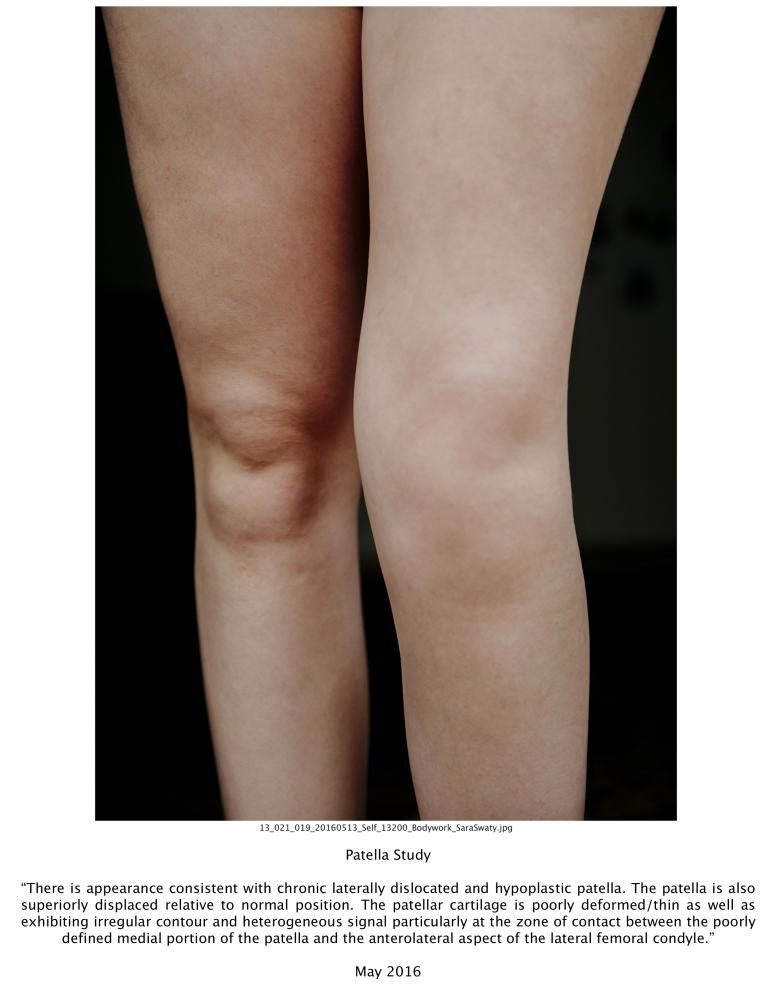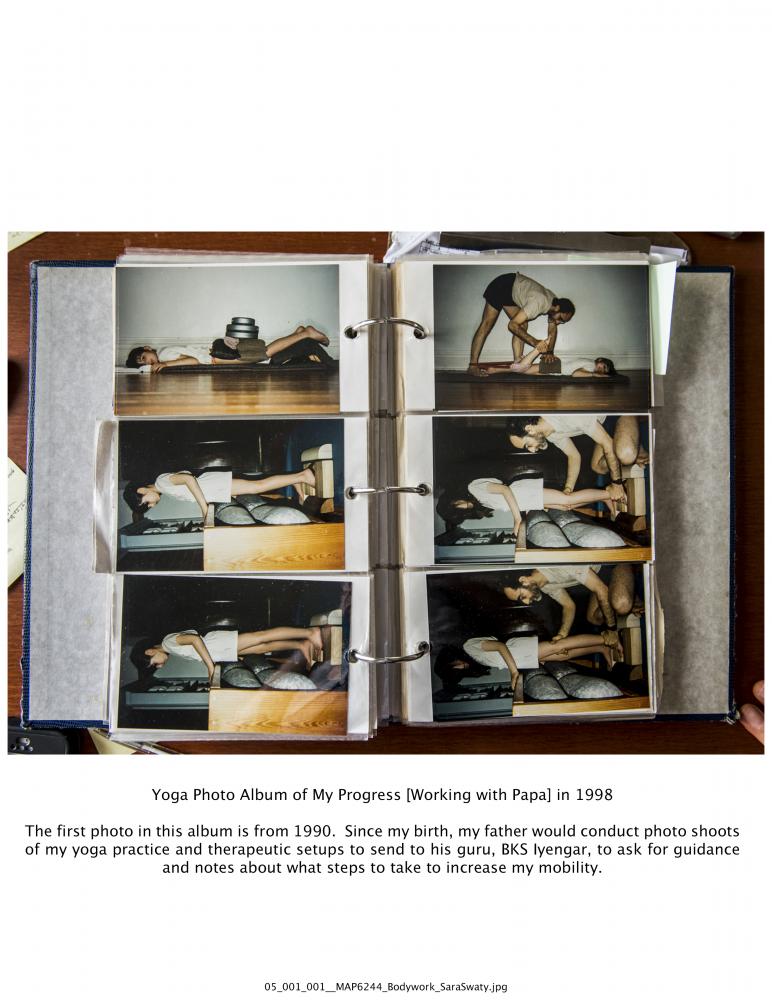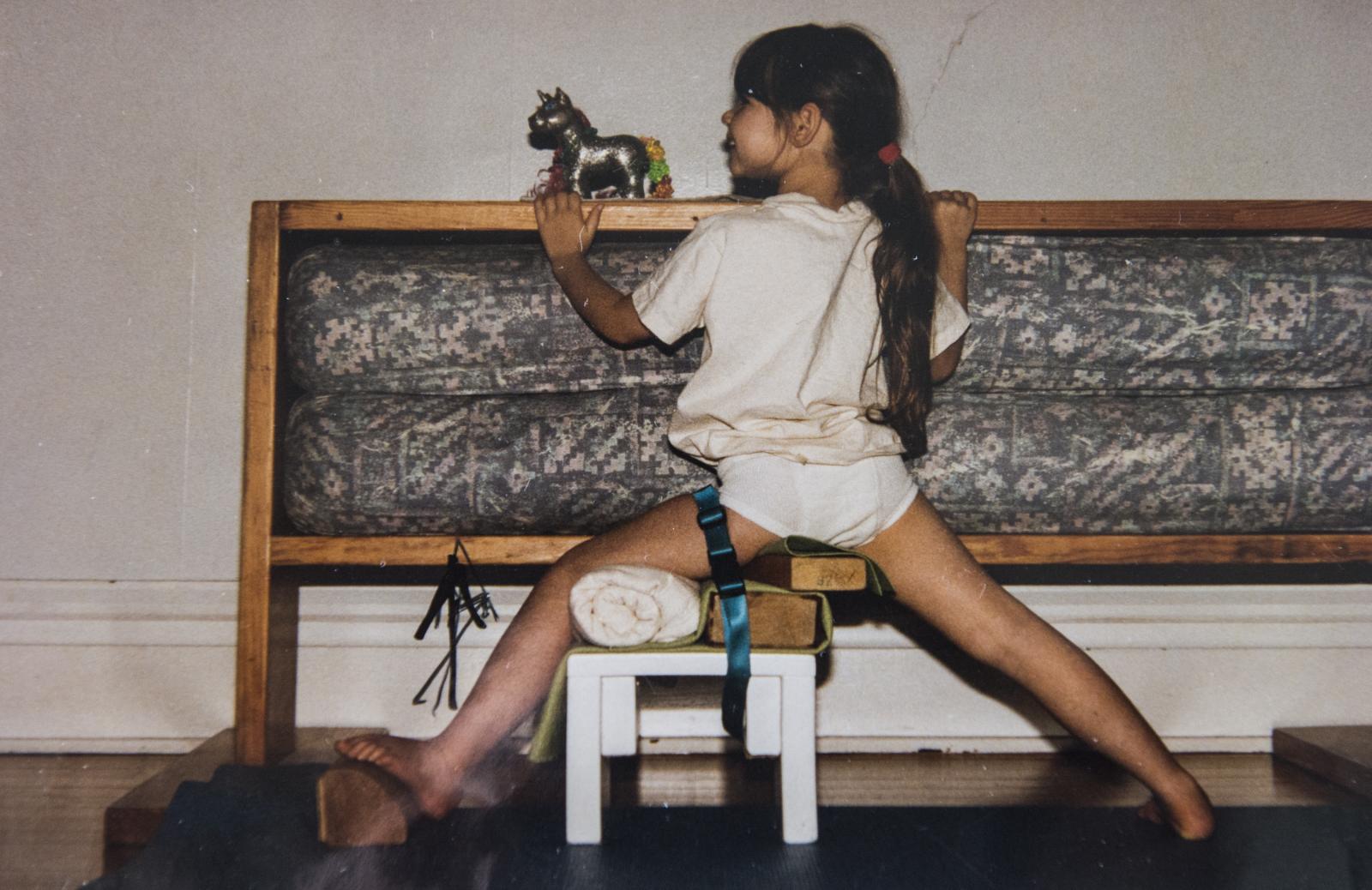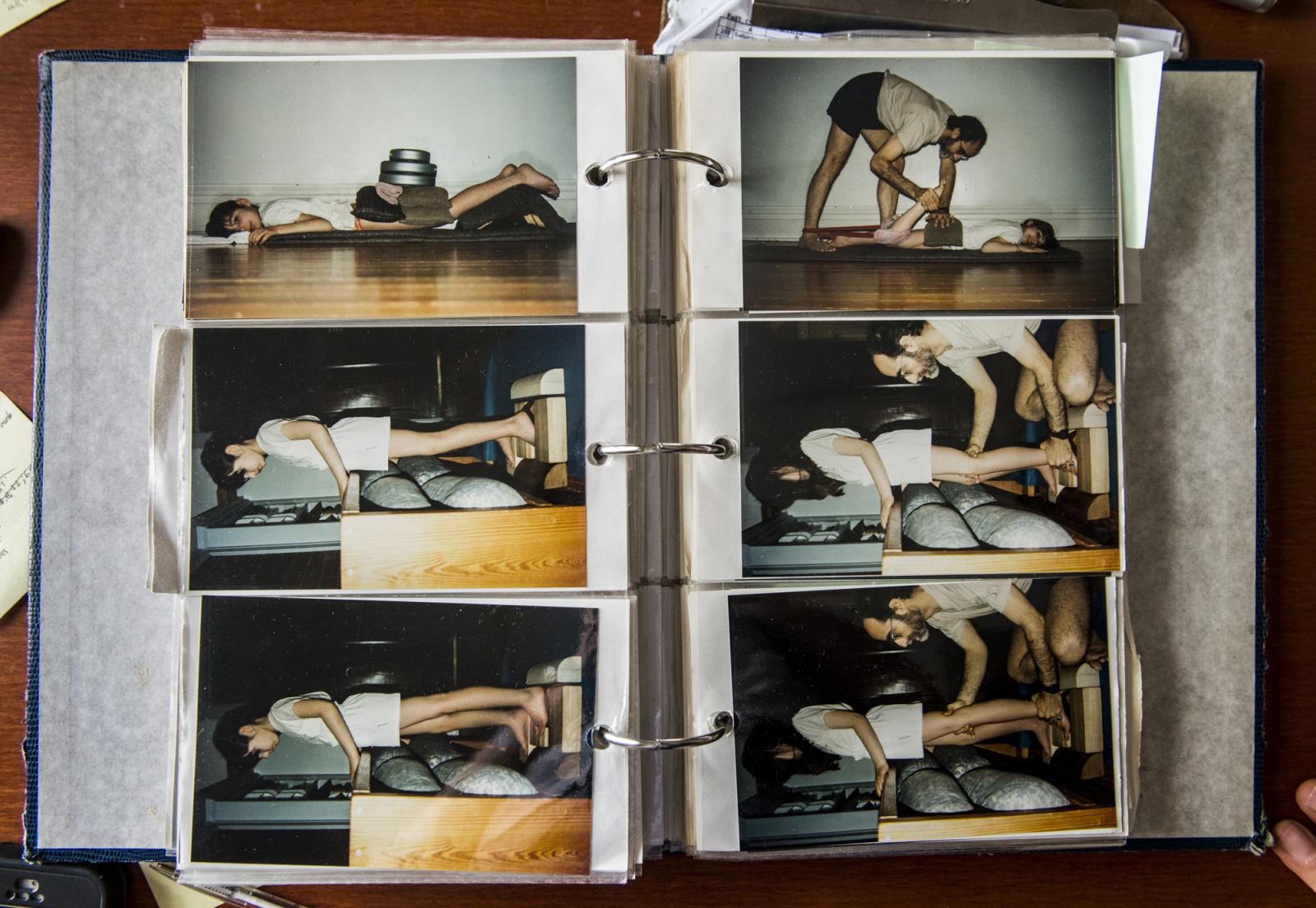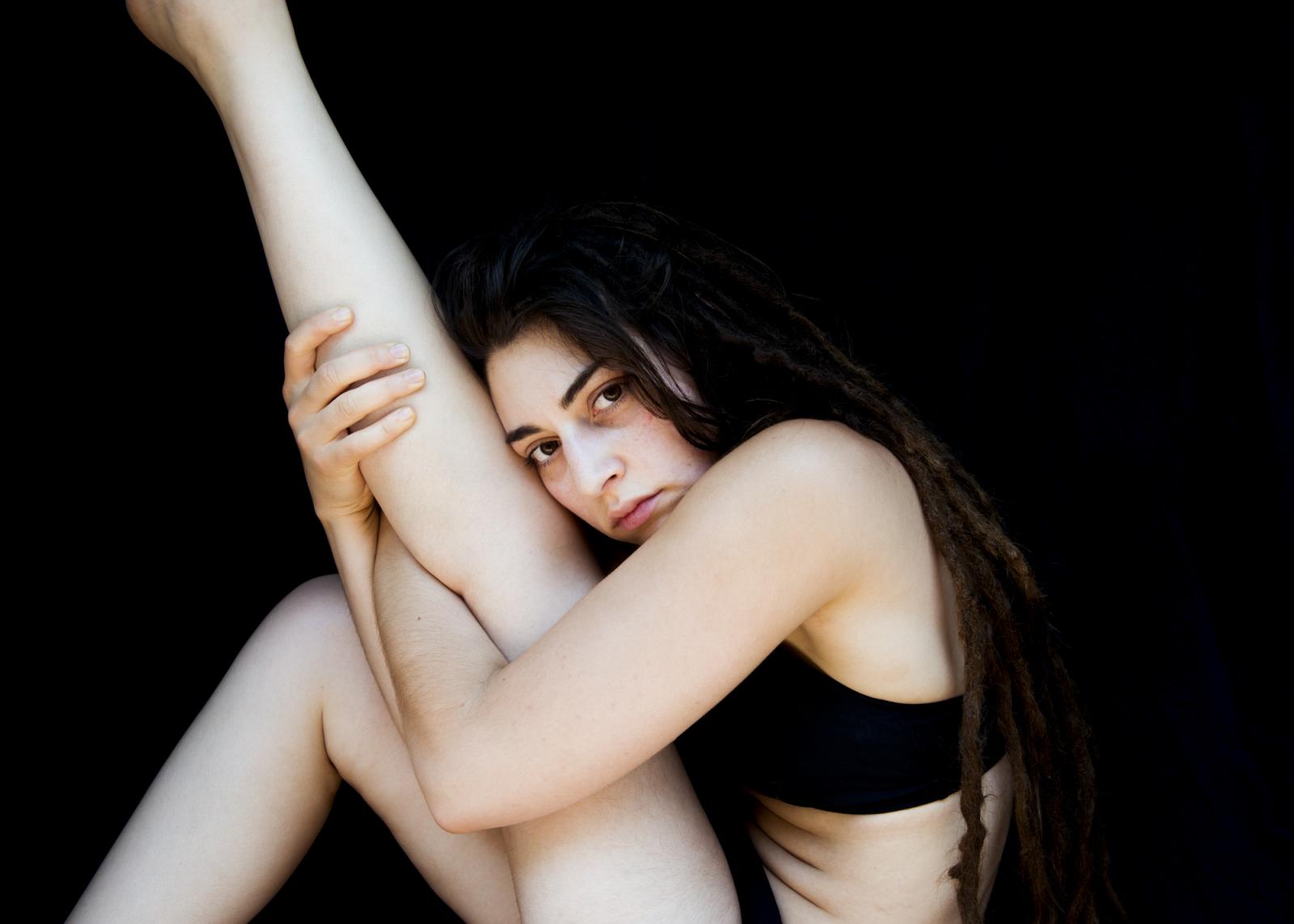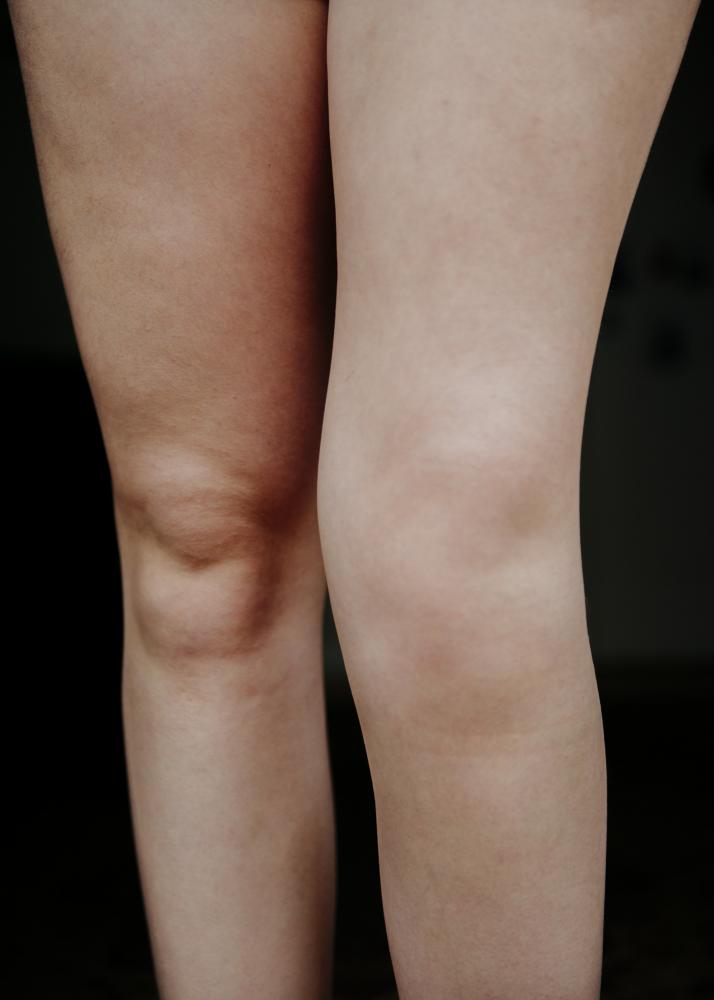Private Project
Samskara: Bodywork 2024
Samskara: Bodywork Reflection Knees are one of the most vulnerable parts of human anatomy. Despite their important function of stabilizing the body, they are ill designed for the task. My left knee is a medical enigma, unable to bend greater than 10-30 degrees since my birth. While doctors were quick to recommend surgeries for this undiagnosed complexity, the severe side affects and risks were too great to disregard. No medical practioner has been able to identify or resolve this trauma: they all demand the same questions that I ask of them, "How?" and "Why?" Although that question has yet to be answered, my father's expertise in Iyengar yoga gave me the tools to adapt by practicing yoga at two years old. However, when I became a teenager, I was quick to abandon the demanding daily work.
In 2015, after ten years of neglect, I had to face the task of demystifying my body and explore different treatments. Initially, I couldn't bear to even touch my knee. It was alien to me: emaciated and atrophying into numbness and needles. Excruciating pain would invade my leg in the middle of the night, screaming at me to pay attention. This wake up call was terrifying, but instigated a call to action I couldn't ignore. The past two years have been a process of learning to love myself. I touch and support my knee now, instead of rejecting its existence. Within the work, there is unrelenting pain, tears, and anger"but there is also ecstatic elation, joy, and love. By documenting my physical progress, I have begun to see my body differently. As I continue my journey, parts of me that used to cause self-loathing now bring a renewed fierce hope for growth. This therapeutic self-portrait series examines the impact physical complexities have on identity and self-image. My body is in a continuous state of negotiating private and public perceptions: what others see and the way I see myself. Through exploring holistic treatments, I've begun to connect the way physical trauma impacts the psyche and creates tangible emotional blocks within the body.
----------------
ADDITIONAL
Many years later, this choice caught up to me and I was forced to acknowledge a part of my body that I had ignored for too long. After years of neglect, I had to face the task of demystifying my body and explore different treatments. My knee was alien to me, obscured and emaciated, atrophying into numbness and needles. I used to cry every time my leg trembled, the reaction of dormant muscles awakening. Defeat echoed in my mind when thoughts drifted to the future, leaving me immobile with terror. Now, I chase the shaking sensation, alerting new tissues to work. Within the process, there is unrelenting pain, tears, and anger"but there is also ecstatic elation, joy, and love. The past two years have been an intense process of learning to love myself. By documenting my physical progress and experiments with therapies and their effects, I have begun to see my body differently. As I continue my journey for physical and mental health, parts of me that used to cause self-loathing now bring a renewed fierce hope for growth.
The first photographs in this ongoing series were taken in February of 2015 during appointments with massage therapists, followed by meetings with other health care professionals. While most of the project takes place in Los Angeles, California, the work is continued when I travel home to St. Louis, Missouri. Samskara: Bodywork is a personal project that explores my quest to find answers to the questions I have asked my entire life: why my knee won't bend, what happened to create this problem, and how to gain more flexion. This therapeutic self-portrait series examines the impact physical complexities have on identity and self-image. My body is in a continuous state of negotiating private and public perceptions: what others see and the way I see myself. Through exploring holistic treatments like acupuncture and massage, I've begun to connect the way physical trauma impacts the psyche and creates tangible emotional blocks within the body.
394

